The english prescription
A prescription (℞) is a health-care program fulfilled by a physician or other medical doctors in the form of instructions that contain the plan of care for an individual patient. Prescriptions are handwritten on preprinted prescription forms that identify the document as a prescription, the name and address of the prescribing provider and any other legal requirement such as a registration number.
℞ is a symbol meaning "prescription". It originated in medieval manuscripts as an abbreviation of the Late Latin verb recipe, the imperative form of recipere, "to take" or "take thus". Literally, the Latin word recipe means simply "Take …" and medieval prescriptions invariably began with the command to "take" certain materials and compound them in specified ways. Today, when a medical practitioner writes a prescription beginning with "℞", he or she is completing the command.
Both pharmacists and prescribers are regulated professions in most jurisdictions. A prescription as a communications mechanism between them is also regulated and is a legal document.
Regulations may define what constitutes a prescription, the contents and format of the prescription and how prescriptions are handled and stored by the pharmacist.
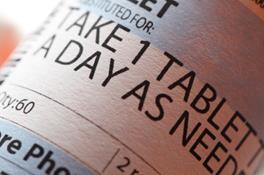 Some prescriptions will specify whether and how many "repeats" or "refills" are allowed; that is whether the patient may obtain more of the same medication without getting a new prescription from the medical practitioner.
Some prescriptions will specify whether and how many "repeats" or "refills" are allowed; that is whether the patient may obtain more of the same medication without getting a new prescription from the medical practitioner.
When filled by a pharmacist, he may write some additional information right on the prescription, such as the actual manufacturer of the drug and the date the medication was dispensed. Legislation may also require the pharmacist sign the prescription.
When filled by the pharmacist, prescriptions are typically assigned a "prescription number" that is written right on the prescription. The prescription number has the practical purpose of identifying the prescription later on while filed. The prescription number is also put on the label on the dispensed medication. The patient may be required to reference the prescription number for refills and drug insurance claims. There may also be a legal requirement for prescription numbers for subsequent identification purposes.
As a legal document, some jurisdictions may require the archiving of the original paper prescription in the pharmacy. Often the patient cannot take the original prescription with them. Some jurisdictions may give patients a copy. The retention period varies but can be as long as 10 years. Once the retention period has passed, privacy legislation may dictate what can be done with the original paper prescription. Legislation may also dictate what happens to the prescriptions if the pharmacy closes or is sold.


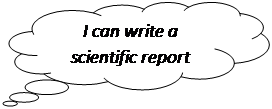
Unlike an essay, a report has a formalized structure. The sections of a scientific report are:
1) Title. The title of the report should be short and informative. It should not be indefinite and general, but should reflect the essence of the research. The title should be no longer than 15 words. It is generally given on a separate page together with the name of the researcher, course and instructor details.
2) 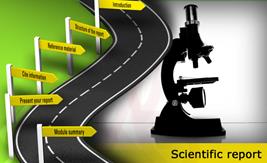 Abstract. The abstract is a precise summary of the whole report. Its function is to preview the contents of your report so that the reader can judge whether it is worth their while to read the whole report.
Abstract. The abstract is a precise summary of the whole report. Its function is to preview the contents of your report so that the reader can judge whether it is worth their while to read the whole report.
3) Introduction. In your introduction, you need to let the readers and markers of the report know why the report is important and what exactly the report is about.
4) Method. The purpose of this section is to exactly describe method and materials used to carry out the experiment with enough detail so someone else could repeat the same procedure.
5) Results. This section describes but does not explain your results; it provides the reader with a factual account of your findings.
6) Discussion. This section has two fundamental aims: to explain the results of the study and to explore the significance of the study’s findings.
7) Reference listor bibliography. A bibliography is a list of all the reference material the researcher consulted during his research for the report while a reference list is a list of all the references cited in the text of the report, listed in alphabetical order at the end of the report. Each reference in the reference list needs to contain all of the bibliographic information from a source.
8) Appendices. Information that is not essential to explain the researcher’s findings, but that supports his analysis (especially repetitive or lengthy information), confirms his conclusions or pursues a related point should be placed in an appendix.
Exercise 16:Here are some cliché to write a scientific report. Translate them into Russian and state to what part of the report they can refer:
| 1) Title 2) Abstract 3) Introduction 4) Method 5) Results 6) Discussion 7) Reference list 8) Appendices | ¨ As the title implies the article describes … ¨ A mention should be made about … ¨ From the results it is concluded that … ¨ The following conclusions are drawn … ¨ The purpose of the research is to prove (test, develop, summarize, find) … ¨ This method is now generally accepted … ¨ There is some interesting information in the paper … ¨ It is impossible to account for … ¨ It draws our attention to… ¨ Much attention is given to… ¨ Some factors are taken into account … ¨ Thus, a general conclusion is made concerning … ¨ This method is now generally accepted … ¨ The article under discussion aims to explain … ¨ The measurements (calculations) are made … ¨ It is necessary to introduce … ¨ The author refers to … ¨ There are several solutions of the problem … |
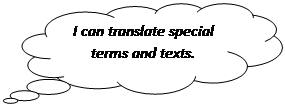

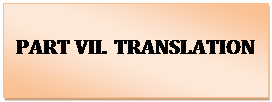
Exercise 17:Before translation make a back-ground analysis: Quincke, MAO.
Exercise 18:Before translation study the theory of translation – comparative analysis.
Важным методом исследования в лингвистике перевода служит сопоставительный анализ перевода, т.е. анализ формы и содержания текста перевода в сопоставлении с формой и содержанием оригинала. Эти тексты представляют собой объективные факты, доступные наблюдению и анализу. Таким образом, в процессе перевода устанавливаются определенные отношения между двумя текстами на разных языках (текстом оригинала и текстом перевода). Сопоставляя такие тексты, можно раскрыть внутренний механизм перевода, выявить эквивалентные единицы, а также обнаружить изменения формы и содержания, происходящие при замене единицы оригинала эквивалентной ей единицей текста перевода. Сопоставительный анализ переводов дает возможность выяснить, как преодолеваются типовые трудности перевода, связанные со спецификой каждого из языков, а также какие элементы оригинала остаются непереданными в переводе.
Сопоставительное изучение переводов дает возможность получать информацию о взаимосвязи отдельных элементов оригинала и перевода, обусловленной как отношениями между языками, участвующими в переводе, так и внелингвистическими факторами, оказывающими влияние на ход переводческого процесса.
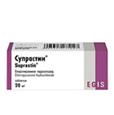 Exercise 19:Read the annotation to the medicinal preparation Suprastin® and translate it into Russian. Carry out comparative analyses of original annotation and its translation into Russian.
Exercise 19:Read the annotation to the medicinal preparation Suprastin® and translate it into Russian. Carry out comparative analyses of original annotation and its translation into Russian.
SUPRASTINE®
Drug name: Suprastin® (chloropyramine) Therapeutic effects: Suprastin® is a histamine H1-receptor antagonist, a derivative of ethylenediamine. Its main component, chloropyramine, prevents the development of allergic reactions and facilitates their course. Suprastin® has a moderate sedative effect and a marked antipruritic property. It possesses antiemetic effect, peripheral anticholinergic activity, and moderate inflammatory properties. Indications: · hives; · angioedema (Quincke’s edema); · serum sickness; · seasonal and perennial allergic rhinitis; · 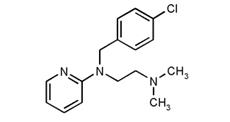 conjunctivitis; · contact dermatitis; · skin itching; · acute and chronic eczema; · atopic dermatitis; · food and drug allergies; · allergic reactions to insect stings. Side Effects: · CNS: drowsiness, fatigue, dizziness, agitation, tremor, headache, euphoria. · Gastrointestinal tract: abdominal discomfort, dry mouth, nausea, vomiting, diarrhea, constipation, appetite disorders, pain in the upper abdomen. · Cardiovascular system: decreased blood pressure, tachycardia, arrhythmia. · Other: difficulty urinating, muscle weakness, increased intraocular pressure, photosensitivity. Drug interactions: Suprastin® should not be used with the following drugs: · sedatives, tranquillizers; · analgesics; · MAO inhibitors; · tricyclic antidepressants; · sympatholytics; · atropine. Cautions and restrictions: Suprastin® should not be used in the following conditions: · hypersensitivity; · acute attack of asthma; · newborns; · pregnancy, breastfeeding. Use Suprastin® with caution in: · angle-closure glaucoma; · urinary retention; · prostatic hyperplasia; · liver and / or kidneys dysfunction; · cardiovascular diseases; · elderly patints. Additional information: The drug should be stored in a place inaccessible to children at a temperature 15 to 25 C. Shelf life - 5 years. conjunctivitis; · contact dermatitis; · skin itching; · acute and chronic eczema; · atopic dermatitis; · food and drug allergies; · allergic reactions to insect stings. Side Effects: · CNS: drowsiness, fatigue, dizziness, agitation, tremor, headache, euphoria. · Gastrointestinal tract: abdominal discomfort, dry mouth, nausea, vomiting, diarrhea, constipation, appetite disorders, pain in the upper abdomen. · Cardiovascular system: decreased blood pressure, tachycardia, arrhythmia. · Other: difficulty urinating, muscle weakness, increased intraocular pressure, photosensitivity. Drug interactions: Suprastin® should not be used with the following drugs: · sedatives, tranquillizers; · analgesics; · MAO inhibitors; · tricyclic antidepressants; · sympatholytics; · atropine. Cautions and restrictions: Suprastin® should not be used in the following conditions: · hypersensitivity; · acute attack of asthma; · newborns; · pregnancy, breastfeeding. Use Suprastin® with caution in: · angle-closure glaucoma; · urinary retention; · prostatic hyperplasia; · liver and / or kidneys dysfunction; · cardiovascular diseases; · elderly patints. Additional information: The drug should be stored in a place inaccessible to children at a temperature 15 to 25 C. Shelf life - 5 years. |
Exercise 20:Work with a group - Answer the questions:
